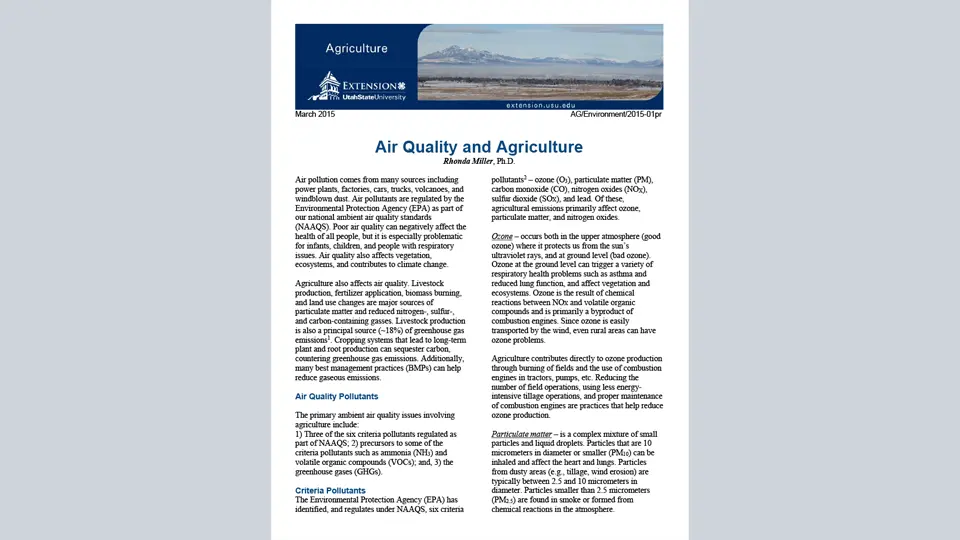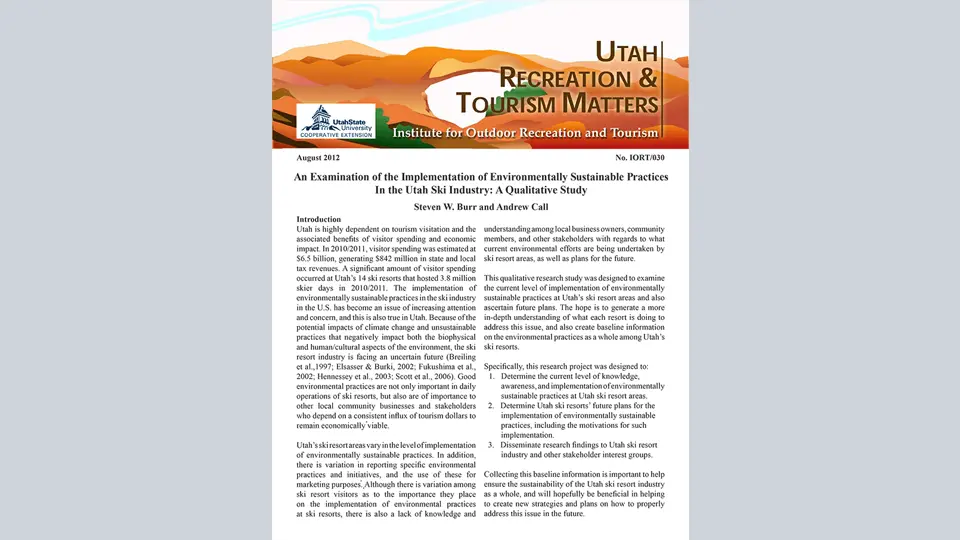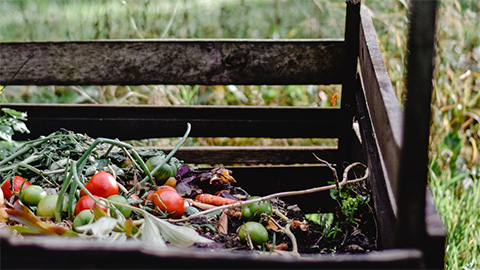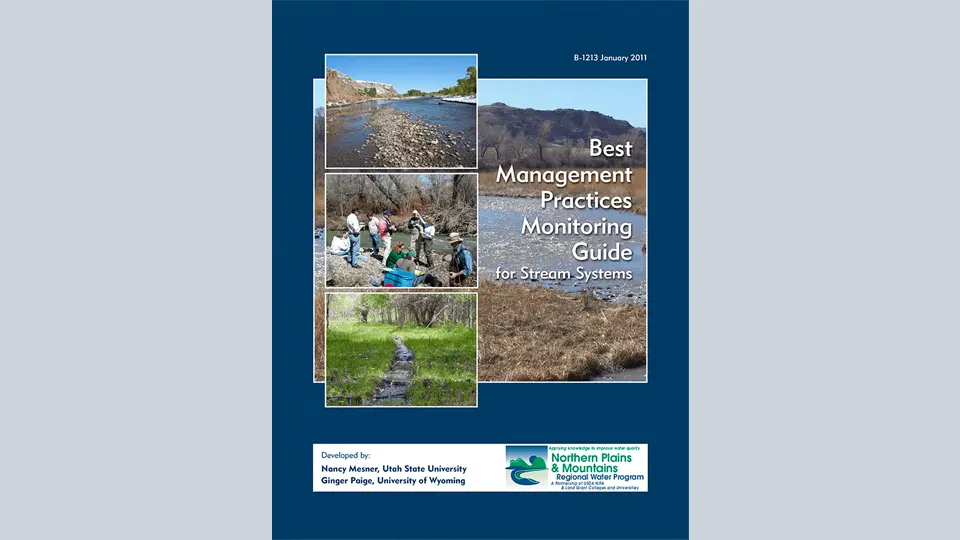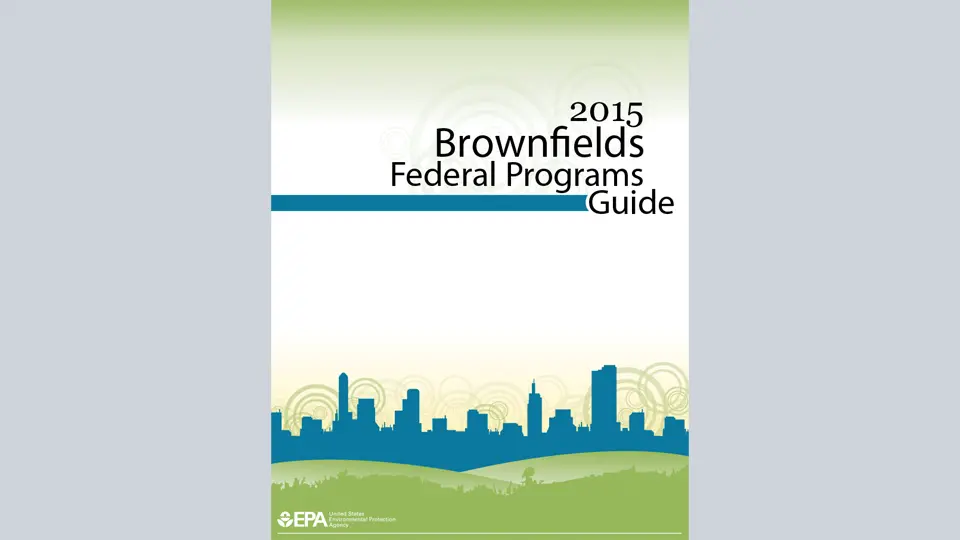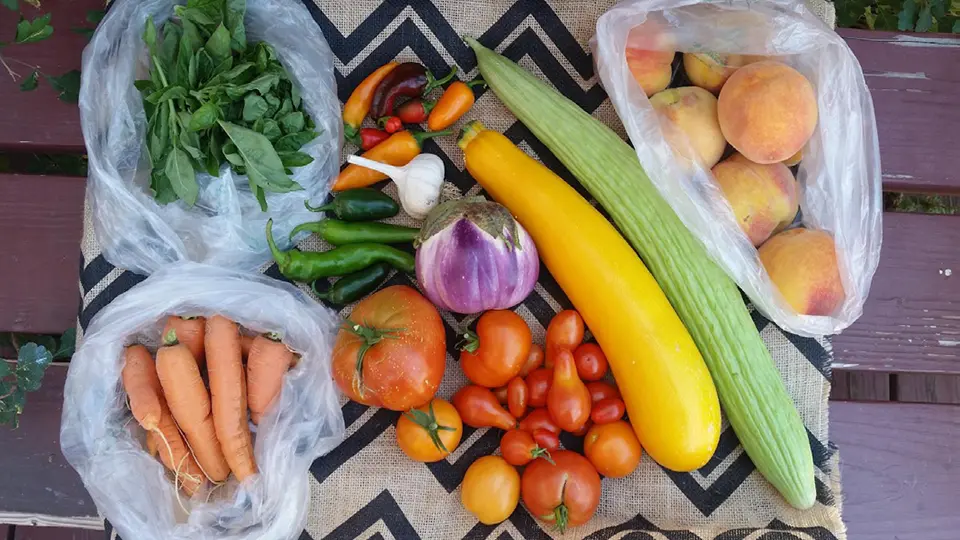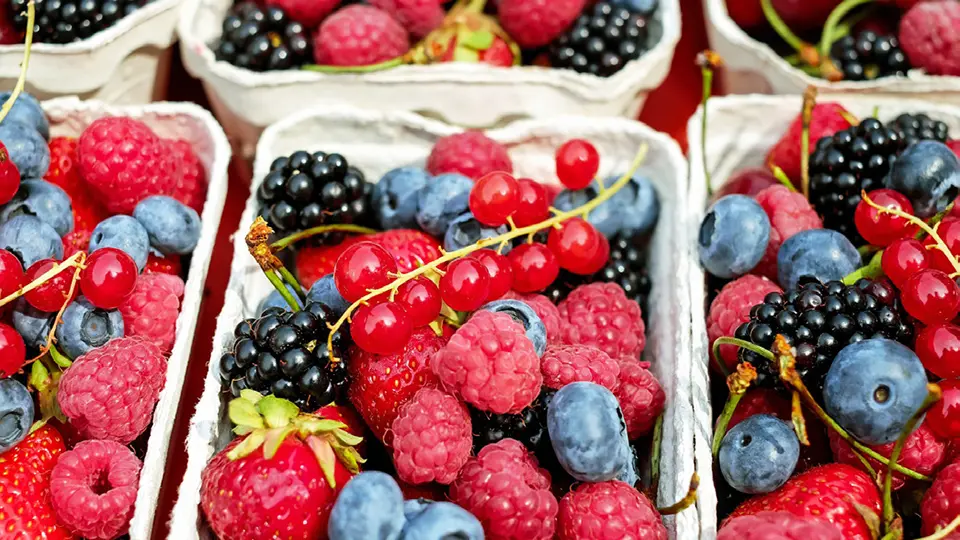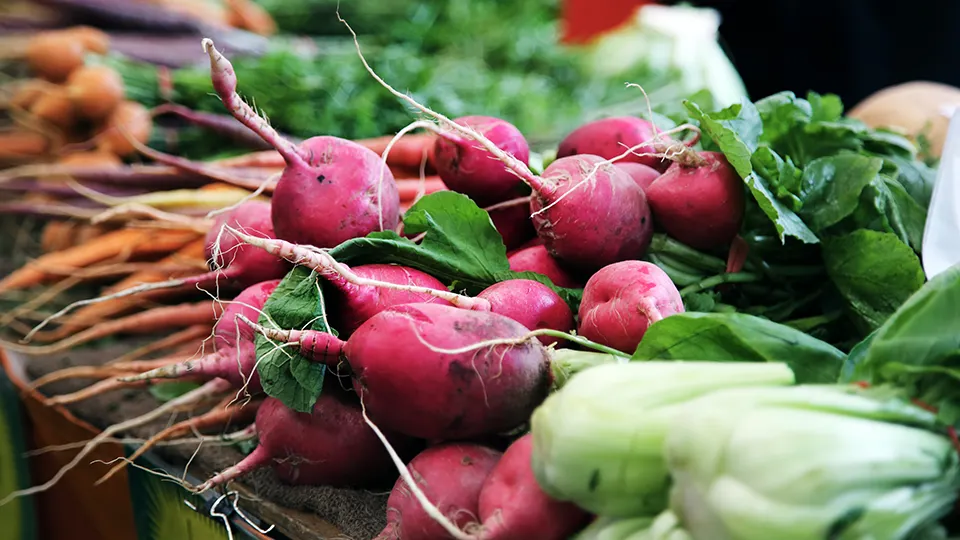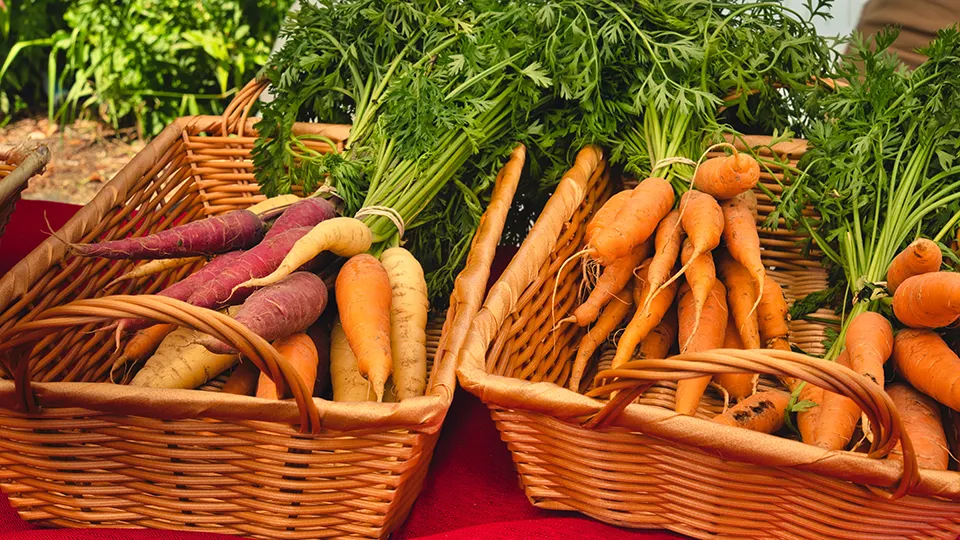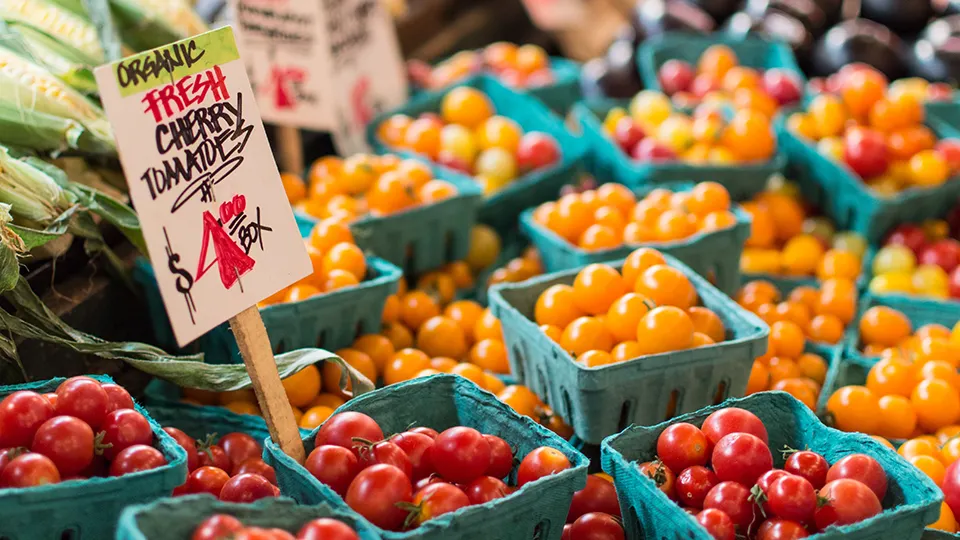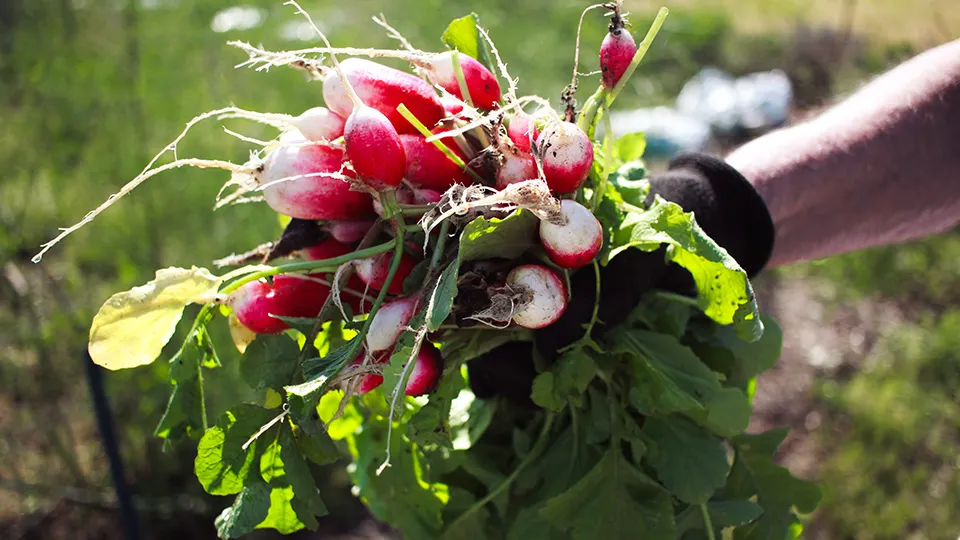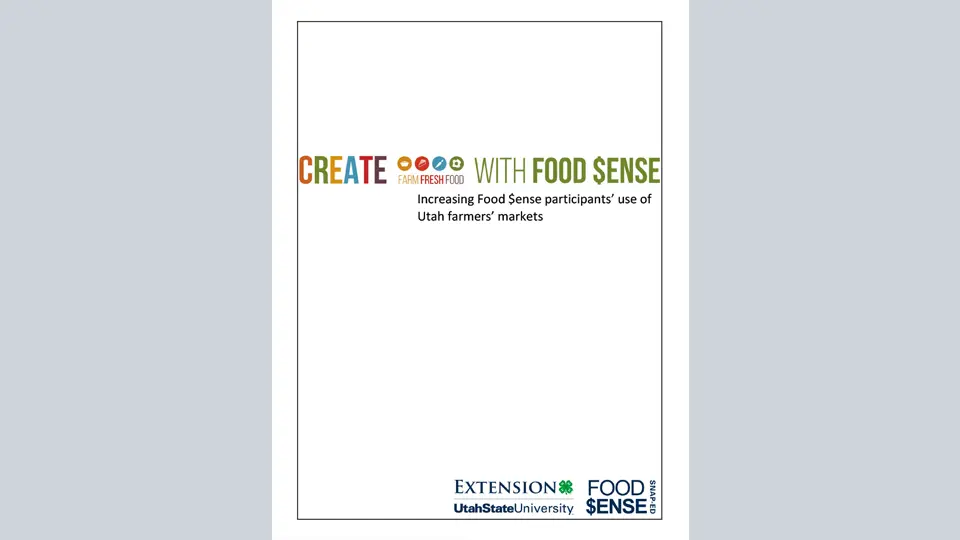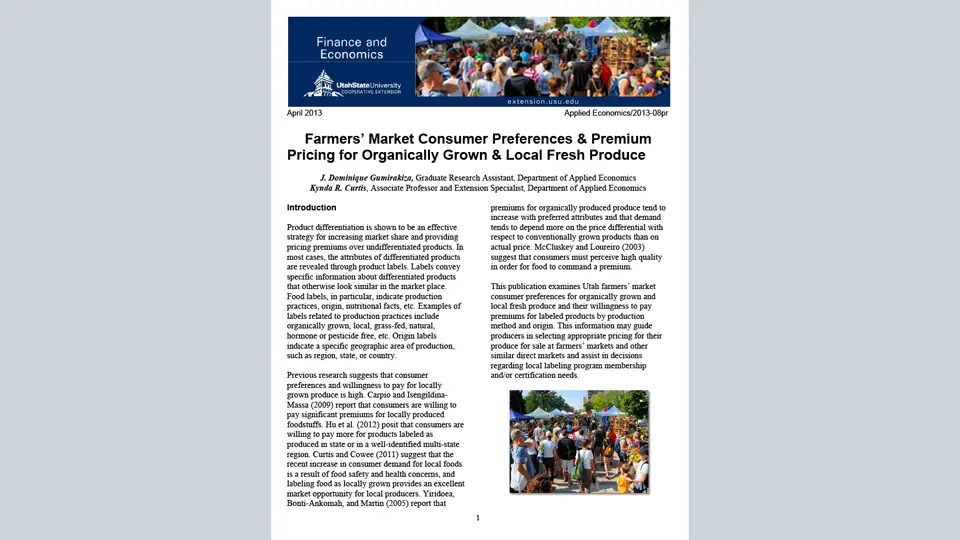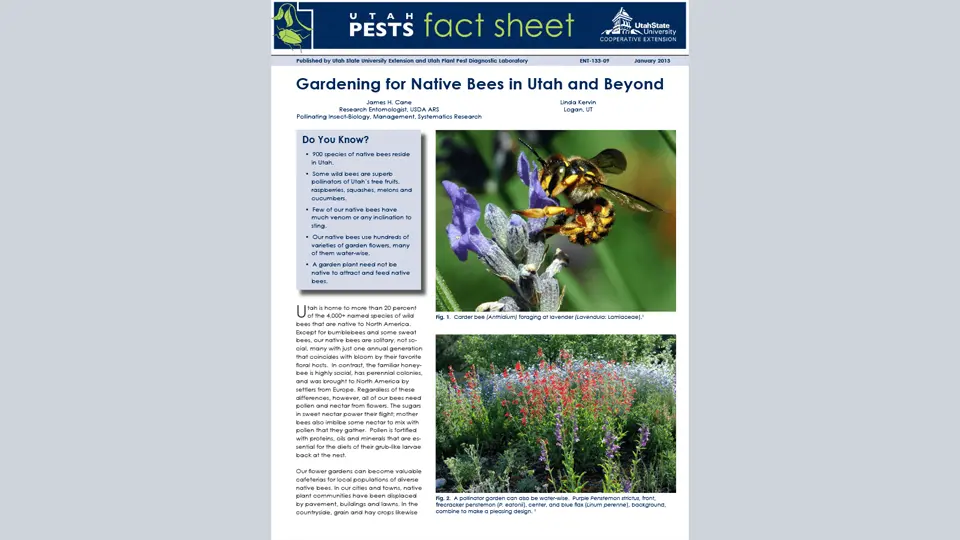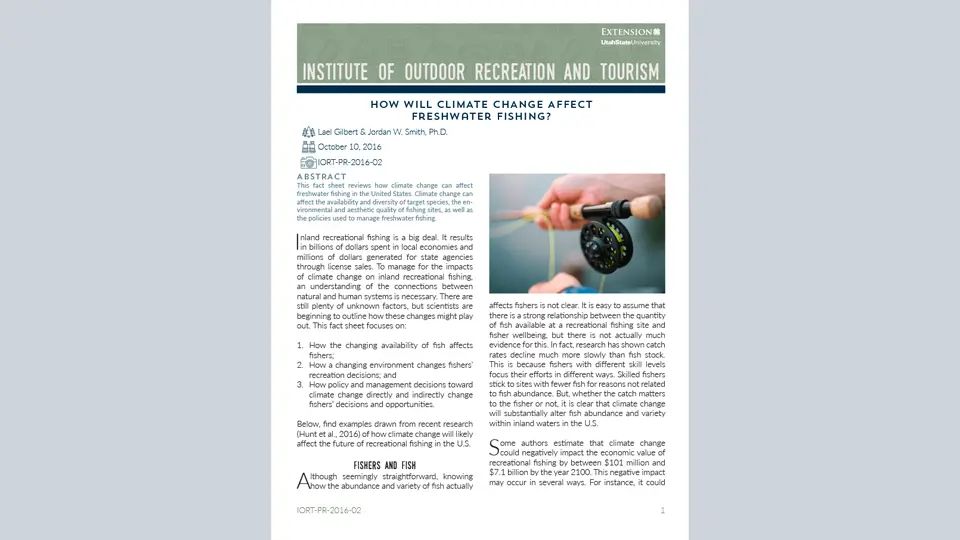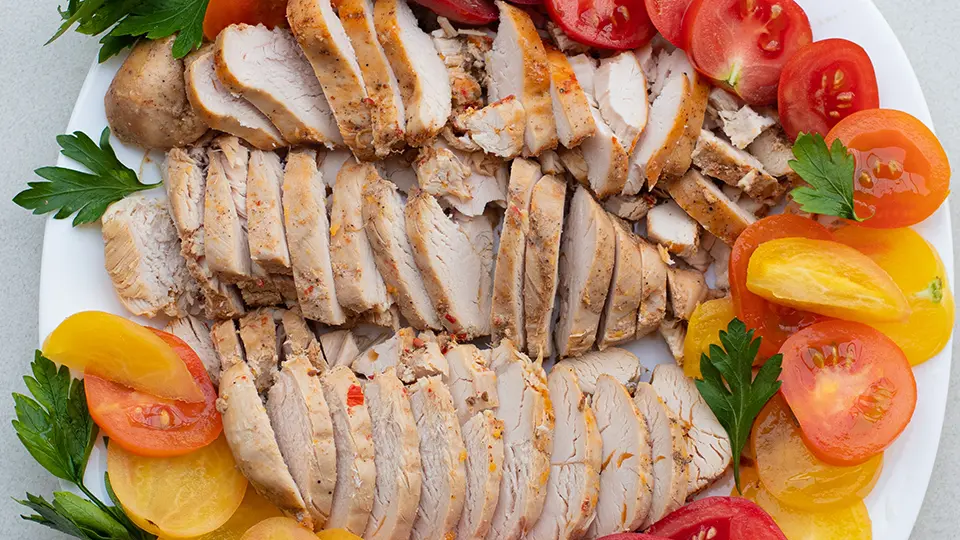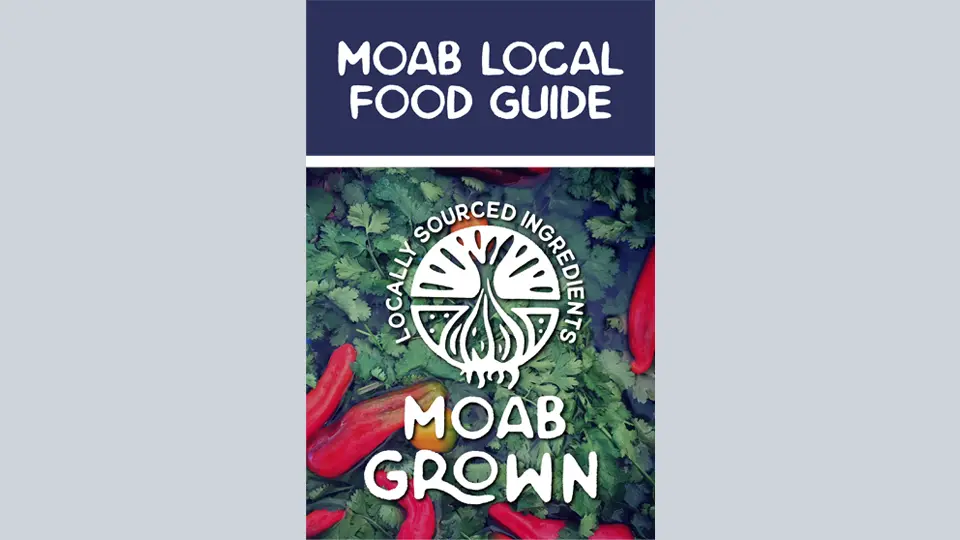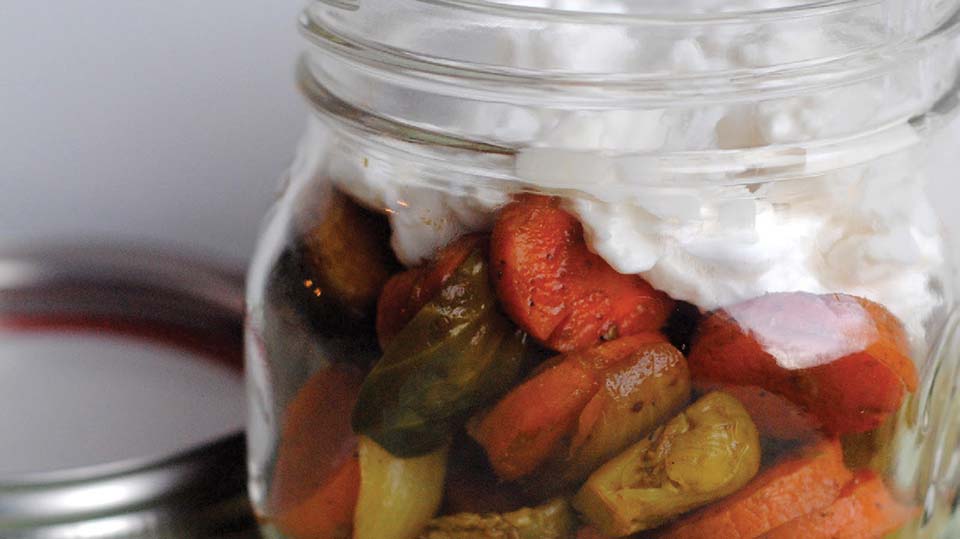Community Supported Agriculture: Accepting SNAP Payments

Participating in a community supported agriculture (CSA) share is one way for individuals with low income to use their Supplemental Nutrition Assistance Program (SNAP) benefits in buying local, seasonal fruits and vegetables. The U.S. Department of Agriculture’s Food and Nutrition Service (USDA FNS) authorizes businesses to accept SNAP benefits, including direct marketing farmers and nonprofit food buying cooperatives operating a CSA.
SNAP is the largest federal nutrition assistance program, formerly known as food stamps. Eligible individuals and families use an Electronic Benefit Transfer (EBT) card, similar to a debit card, to purchase eligible food at SNAP authorized vendors. In Utah, the EBT card is known as the Horizon EBT Card.
Benefits of Accepting SNAP Payments
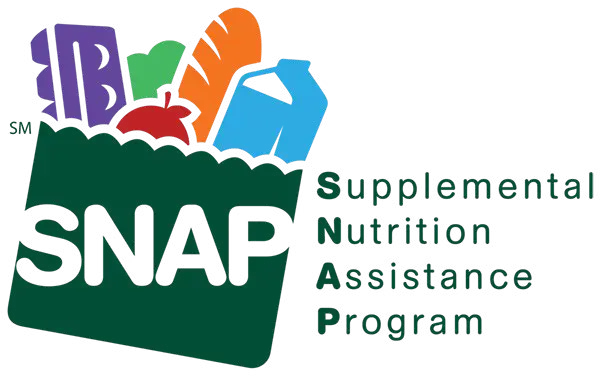
Accepting SNAP payments yields many benefits. Growing your CSA customer base, expanding to new locations, and adding revenue increases the viability of your CSA (Sitaker et al., 2020). Accepting SNAP also improves food access and food security for your community, adding to its health and well-being (Seguin et al., 2019). Many farmers have offered cost-off-set shares, described as shares sold at a 25% to 50% discount because they value civic agriculture and want their food to reach people that have “had a harder time providing fruits and vegetables to their families” (Sitaker et al., 2020, p. 34). Additionally, the relationships with SNAP participants build a stronger sense of community (Sitaker et al., 2020).
SNAP-Eligible Foods
Eligible food items (consistent each year) include fruits, vegetables, meat, poultry, fish, dairy products, breads, cereals, snack foods, and nonalcoholic beverages (Food and Nutrition Service, 2013b). Seeds and plants producing food for the household to eat are also eligible. SNAP individuals cannot use SNAP benefits to buy beer, wine, liquor, tobacco, vitamins, medicines, supplements, prepared foods fit for immediate consumption, hot foods, inedible flowers, decorative pumpkins or gourds, pet food, or live animals (except shellfish, fish removed from water, and animals slaughtered prior to pick up from the CSA or store) (Food and Nutrition Service, 2013b).
Allowable Charges
You can collect SNAP payments on a weekly, biweekly, or monthly basis, depending on the frequency of your CSA pickups. SNAP benefits may not be used to pay any administrative, delivery, or membership fees, nor taxes or down payments associated with operating your CSA (Zenger Farm, 2013). If you include fees in the cost of your share, you must arrange for your SNAP participants to pay their fees through other means or waive the fees.
Double Up Food Bucks

Your CSA can participate in Double Up Food Bucks (Double Up), a nutrition incentive program helping SNAP participants purchase more fruits and vegetables with their SNAP benefits. Double Up works by matching SNAP benefits dollar-for-dollar, up to a specific amount, such as $10 or $20. Find information on how to apply to participate in Double Up at doubleuputah.org.
Models for Participating in Double Up
Implementing the Double Up program for CSAs differs across the nation. In Arizona, SNAP participants who joined a CSA that accepts SNAP and Double Up pay for the first two shares of the month with their EBT cards, then take home produce during weeks 3 and 4 with the Double Up program (Double Up Food Bucks Arizona, n.d.). Double Up programs in Colorado and Michigan suggest that SNAP participants pay for a CSA share every other week with the EBT card and use the Double Up program in between to get a CSA share (Double Up Food Banks Colorado, n.d.; Wills, 2014).
Marketing and Outreach
Informing customers that your CSA accepts SNAP benefits is important. You can update your website and other advertising materials by adding information, such as “We welcome SNAP/EBT customers” or “Horizon EBT Card Accepted.” You can order SNAP graphics for use on posters and decals from USDA FNS by calling (877) 823-4369. The SNAP logo is recognizable and trusted by SNAP participants, so using unofficial logos or alterations of the federal logo could create confusion. Information on using the SNAP logo is available at https://fns-prod.azureedge.us/sites/default/files/resource-files/SNAP-Logo-Guidance(5.14.2021).pdf.
Models for Participating in Double Up
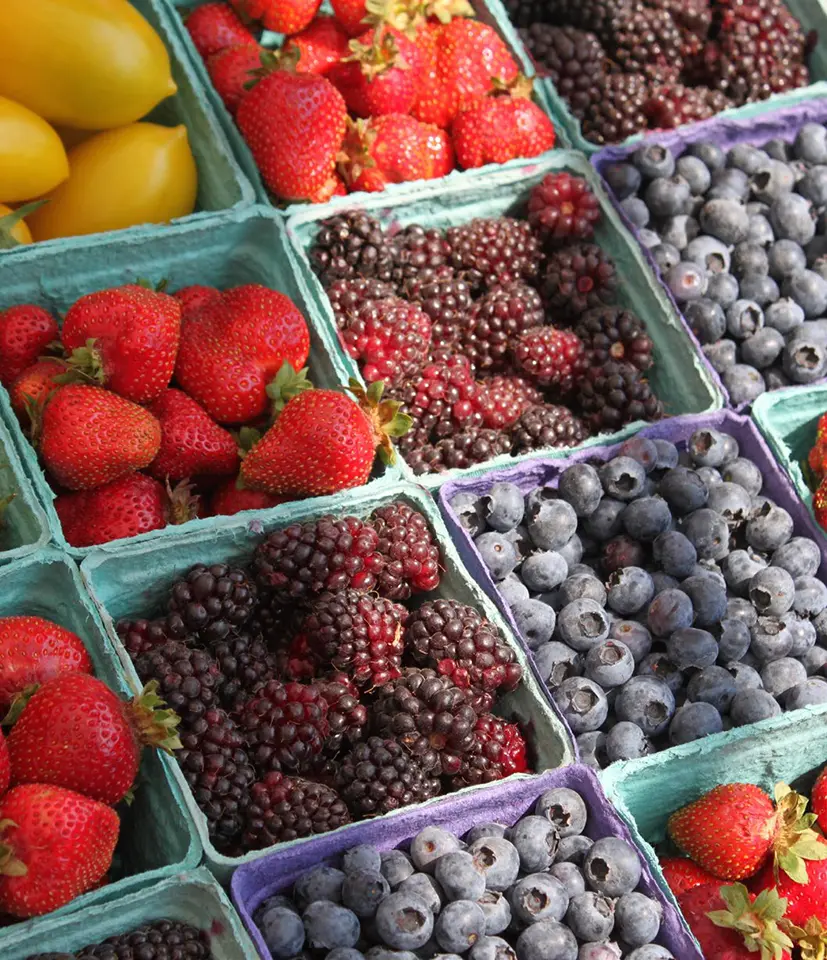
Lack of awareness is one of the barriers to joining a CSA (Howard & Goodrum, 2018). Consider advertising the acceptance of SNAP benefits at your CSA through community-based organizations, such as food pantries, churches, libraries, neighborhood groups, community health clinics, and after-school programs. Other contacts that could help with outreach include your county Extension office, health department, Head Start, Boys & Girls Clubs, regional or county SNAP-Education (SNAPEd) contact, Utahns Against Hunger, local Department of Workforce Services, and Urban Food Connections of Utah. Community-based organizations can provide resources, such as volunteers to help process SNAP payments or serve as a CSA pickup location for members (Howard & Goodrum, 2018).
Advertise Using Word of Mouth by CSA Members
Let your current CSA members know that you are accepting SNAP benefits as a payment option. Most CSA members share news about the CSA they belong to because they believe in your business. New members joining a CSA can find the experience intimidating, so you could offer a discount to SNAP participants referred by a current CSA member (Howard & Goodrum, 2018).
Use Social Media Platforms
Social media platforms are an affordable communication tool to raise awareness of your SNAP and Double Up incentive programs. You can fundraise through your social media platforms to support SNAP shares by your followers, request followers to contact local legislators or community decision-makers about SNAP and Double Up incentive programs, or offer useful information about your CSA (Wholesome Wave, n.d.).
Use Social Media Platforms
Local newspapers, TV stations, or radio stations are great outlets to discuss how SNAP participants can purchase CSA shares. Consider framing the story in a way that highlights the positive reasons for buying a CSA membership using SNAP benefits and Double Up and how it provides a way for residents with limited income to gain access to fresh, healthy, locally grown food (Howard & Goodrum, 2018).
Share Information With SNAP Participants
Provide SNAP participants with the news needed to successfully use their CSA share. Marketing information to SNAP participants could highlight quotes from current members and outline how participation in the CSA supports the local economy, supports a local farmer, promotes environmental stewardship, and offers fresh, healthy, locally grown food (Howard & Goodrum, 2018). Let the SNAP participants know what they might find in your CSA, how your CSA works, and the membership agreement form. Have a conversation with SNAP participants at the time they sign up to make sure the CSA is a good fit for their lifestyle. A face-to-face or telephone conversation will help you learn about their family, lifestyle, eating habits, and their previous participation in a CSA (Zenger Farm, 2013). Discuss your CSA’s pickup time and location because transportation is one of the main reasons that SNAP participants drop out of a CSA (Zenger Farm, 2013). Ask yourself: Is the CSA conveniently located? Is it near public transportation? Can the SNAP participants pick up their shares after work?
Payment Models

SNAP participants likely cannot afford payment for an entire growing season up front, unlike members of the traditional CSA model. As a SNAP authorized vendor, you may not turn down members who want to use SNAP payments. Food and Nutrition Service (2019) recognizes this challenge, so FNS-registered CSAs can accept SNAP payments up to 14 days prior to the delivery/availability of a CSA share. The challenge with the requirements for weekly or bi-weekly payments is that, occasionally, SNAP participants may not have sufficient funds in their SNAP accounts at the time of distribution. SNAP benefits cannot be used to pay for items bought on credit. You cannot waive the CSA fee one week (as credit) with the intent to accept payment the following week (Zenger Farm, 2013). To accommodate this situation, you could include a provision in your CSA membership agreement whereby a SNAP participant pays a cash deposit in exchange for the share or forfeit the share until the SNAP participant can make payments again. Or, your CSA could participate in the Utah Double Up program to reduce the number of EBT payments made by your SNAP participants.
Sliding Share Payment Model
The sliding scale payment model is a tiered pricing system based on combined household income (Local Food Research Center, 2013). This model is frequently used in mixed-income communities to set CSA share prices. You would set the price per share and then offer shares above and below the share price. The ability of your CSA to offer discounted shares is dependent on the sale of a higherpriced share. Target share numbers for each tier can be set in advance or flexible during recruitment and enrollment.
For example, a farmer sets the price at $328 for a half share offered for 20 weeks. For each Tier 1 share sold, the CSA can offer a Tier 2 share because, on average, the CSA will meet the share price:
- Tier 1 share price = $428 for higher-income members.
- Tier 2 share price = $228 for SNAP participants.
Scholarship or Loan Program
Another way to make shares accessible could be by partnering with a community-based organization to create a loan fund or scholarship to help individuals with low income afford a CSA membership (Local Food Research Center, 2013). Another approach is to ask CSA members to donate to a fund that would offer CSA shares to eligible individuals (Local Food Research Center, 2013).
Considerations for Accepting SNAP
When you accommodate SNAP participants with payas-you go plans, you should reduce or eliminate the risk placed on you to ensure your CSA can cover the entire cost of the shares your members purchase. Consider these tips when you create your payment plans:
- Break down your low-income shares as a weekly, biweekly, or monthly cost, making the payment more manageable for SNAP participants (Wholesome Wave, n.d.).
- Ask when SNAP benefits are deposited into SNAP participants’ accounts, helping you to understand at what point during the month SNAP participants can make payments (Wholesome Wave, n.d.).
- Refer to the discounted share as an “incentive” rather than “subsidy.” These discounted shares make the CSA more affordable for low-income individuals, which can be an incentive because they join a local food business that they otherwise might be unable to afford. Even though subsidy and incentive are correct terms for referring to a discounted share, incentive is a more positive term, encouraging SNAP participants to take advantage of a service that they may not otherwise afford (Wholesome Wave, n.d.).
- Create a member waitlist in case a SNAP participant can no longer participate or make payments on their share (Wholesome Wave, n.d.).
- Consider how to market your CSA to create a specific ratio of SNAP participants (e.g., 10%–30%) to nonSNAP members (Wholesome Wave, n.d.).
Models for Accepting CSA SNAP Payments

You can use a wired terminal or wireless terminal to process the EBT cards.
Sliding Share Payment Model
If you have face-to-face contact with your SNAP participants at pickup, as well as electricity and a phone line at your pickup location, you can use an EBT-only wired machine. By law, states must supply no-cost options for direct marketing farmers to accept SNAP, but the law does not require the options to be wireless. Alternatively, you could purchase a point-of-sale machine that accepts EBT cards, debit cards, and credit cards.
Sliding Share Payment Model
If you have a cell phone with good reception at your pickup location, you can use a wireless terminal to process the payment. The wireless terminal works well if you make home deliveries. Wireless terminals can be EBT-only or can also accept credit and debit cards. You can purchase an attachment for your smartphone, tablet, or other handheld device to process the EBT transactions. Wireless terminals can be obtained from a third-party vendor. FNS provides a list of third-party processors at https://fnsprod.azureedge.net/sites/default/files/snap/SNAP-EBTTPP-guidance.pdf. Through MarketLink, the National Association of Farmers Market Nutrition Programs worked with the Novo Dia Group to create TotilPay Go, a point-of-sale system that is compatible with Apple and Android devices (totilpay.com). TotilPay Go has a package available for direct marketing farmers to purchase equipment that accepts credit, debit, and SNAP payments (totilpay.com/totilpay-gopricing/).
Using either the wired or wireless terminal, you process the CSA share payment by having the SNAP participant hand you the Horizon EBT card to pay for SNAP-eligible food items. Use your terminal to process the SNAP payment for the amount of the CSA share. The funds transfer from the SNAP participant’s account to your bank account tied to the terminal. Once approved, provide the SNAP participant with a printed or electronic receipt for the transaction, which serves as a record of the purchase.
Sliding Share Payment Model
Using either the wired or wireless terminal, you process the CSA share payment by having the SNAP participant hand you the Horizon EBT card to pay for SNAP-eligible food items. Use your terminal to process the SNAP payment for the amount of the CSA share. The funds transfer from the SNAP participant’s account to your bank account tied to the terminal. Once approved, provide the SNAP participant with a printed or electronic receipt for the transaction, which serves as a record of the purchase.
Processing CSA Payments at Farmers Markets
If you sell at a farmers market that accepts SNAP benefits, your SNAP participants could pick up their shares at your booth. You should discuss this option with the farmers market manager in advance because it creates extra work for the market, but the SNAP participants would use the market’s existing SNAP payment system. One factor to consider is whether your booth will be overwhelmed with share boxes, affecting the aesthetics of your booth and your time spent talking to farmers market shoppers and other CSA members.
SNAP Membership Agreements
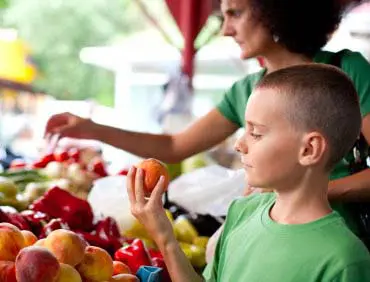
Utah State University Extension’s fact sheet on the legal concerns with CSAs includes resources for how to draft a membership agreement, found here: extensionsustainability.usu.edu/food/. Most CSA membership agreements are not tailored for SNAP participants (Zenger Farm, 2013). Therefore, you can start with a basic membership agreement and tailor information about payments, refundable deposits, missed pickups, and late pickups to develop a SNAP membership agreement.
Payments
Occasionally, SNAP participants will have insufficient funds on their Horizon EBT Card toward the end of the month. Therefore, the CSA membership agreement needs to offer other options for SNAP participants to pay for their shares (Zenger Farm, 2013).
- If you meet with your SNAP participants face-to-face, cash payments work well.
- If SNAP participants pick up their shares from an unstaffed drop site, the membership agreement form should request card information and explain how SNAP participants will have their credit or debit card charged if their Horizon EBT Card has insufficient funds.
- If you do not meet the SNAP participants at the drop site, you should designate someone to serve as a cashier to collect a cash payment that is given to you at a later time.
Refundable Deposits
Friends of Zenger Farm in Oregon recommends that SNAP members submit a deposit when signing up for the CSA (Zenger Farm, 2013). This deposit serves as an incentive to stay in the CSA and to compensate you if the SNAP participant misses a CSA share pickup or drops out. Consider a deposit amount of one month’s share or 5% to 10% of the total cost of the CSA share. The deposit amount needs to be reasonable because the SNAP participants have limited expendable income, but the amount needs to be large enough to serve as an incentive to fully participate in the CSA. The deposit is paid by cash, check, credit card, or debit card, but the Horizon EBT Card cannot be used for the deposit. On the membership agreement form, include information on when the SNAP participants will receive their deposit back and why they would lose their deposit (partially or totally) if they drop out or miss a certain number of pickups. SNAP participants should receive the deposit back in cash at the end of the CSA season.
Missed Pickups
Do not process a SNAP payment for a share that a SNAP participant does not pick up. If you accept a SNAP payment for food that was not delivered at the time of the transaction, you could risk trouble with the USDA FNS. Consider being flexible about missed pickups and set a specific number of pickups participants can miss before you deduct payment from their deposit or cancel their membership. For example, the Zenger Farm permits SNAP members to miss two out of 23 pickups (Zenger Farm, 2013). In the membership agreement, you could ask for members to give you notice if they will miss a pickup to avoid harvesting food unnecessarily
Late Pickups
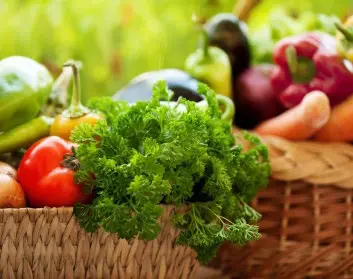
In the membership agreement form, clearly explain your policy and procedures for late pickups of CSA shares. A late pickup can complicate payments from SNAP participants because you state your pickup times when you apply to be a SNAP vendor (Zenger Farm, 2013). You need to consider how you will collect payment from SNAP participants who come after hours.
Apply to Accept SNAP Benefits
To accept SNAP benefits, you first must apply for a SNAP license. Direct marketing farmers operating a CSA are considered retailers when applying for a Food and Nutrition Service permit to accept SNAP benefits (USDA FNS, 2013a). Complete the online application available at https://www.fns.usda.gov/snap/apply-to-accept. You do not pay a fee for processing the application. USDA FNS can take 45–60 days to approve the completed application; you might be contacted to answer further questions or provide additional documentation. To receive answers to questions about the SNAP authorization process or eligibility to accept SNAP, contact USDA FNS at (877) 823-4369.
Summary
This fact sheet reviewed the SNAP and Double Up nutrition incentive programs you can offer through your CSA. We considered various communication tools for recruiting SNAP members and how to draft the information SNAP participants need to join a CSA. Different methods exist for how to set your SNAP share price, including scholarships, loans, and the sliding scale price model. You can use either a wired or wireless terminal to process the EBT cards. A SNAP membership agreement form will help to minimize your risk and let SNAP participants know what to expect. Congratulations on your interest and willingness to make your CSA share more accessible!

References
- Center for Agroecology and Sustainable Food Systems. (2014). The Center for Agroecology & Sustainable Food Systems (CASFS) UCSC Farm Community Supported Agriculture (CSA) Program. University of California-Santa Cruz. https://casfs.ucsc.edu/research/ucsc-csa-overview.pdf
- Double Up Food Bucks Arizona. (n.d.). Everywhere else. https://www.doubleupaz.org/everywhere-else-how-itworks
- Double Up Food Bucks Colorado. (n.d.). How it works. https://doubleupcolorado.org/how-it-works/
- Food and Nutrition Service. (2013a). SNAP retailer service center. U.S. Department of Agriculture. www.fns.usda.gov/snap/RSC
- Food and Nutrition Service. (2013b). What can SNAP buy? U.S. Department of Agriculture. https://www.fns.usda.gov/snap/eligible-food-items
- Howard, T., & Goodrum, A. (2018). Outreach tips for farms that accept SNAP payments for CSAs [Marketing tip sheet]. ATTRA Sustainable Agriculture. https://attra.ncat.org/product/marketing-tip-sheet-outreach-tips-for-farms-thataccept-snap-payments-for-csas/
- Local Food Research Center. (2013). CSAs as a strategy to increase food access: Models of success. Appalachian Sustainable Agriculture Project. https://asapconnections.org/downloads/csas-as-a-strategy-to-increase-food-access.pdf/
- Seguin, R., Ammerman, A., Hanson, K., Kolodinsky, J., Jilcott Pitts, S., & Sitaker, M. (2019). NP3 Farm fresh foods for healthy kids: Innovative cost-offset communitysupported agriculture intervention to prevent childhood obesity and strengthen local agricultural economies. Journal of Nutrition Education and Behavior, 51(7S), S10–S11. https://doi.org/10.1016/j.jneb.2019.05.327
- Sitaker, M., McCall, M., Belarmino, E. H., Wang, W., Kolodinsky, J., Becot, F., McGuirt, J. T., Ammerman, A. S., Jilcott Pitts, S. B., & Seguin-Fowler, R. A. (2020). Balancing social values with economic realities: Farmer experience with cost-offset community supported agriculture. Journal of Agriculture, Food Systems, and Community Development, 9(4), 29–43. doi: 10.5304/jafscd.2020.094.004
- Wilkerson Farm. (2019). CSA. https://wilkersonfarm.com/csa
- Wholesome Wave. (n.d.). How to start a CSA nutrition incentive program: A toolkit for Wholesome Wave’s national nutrition incentive network. https://www.mainefarmersmarkets.org/wp-content/uploads/2015/10/How-to-Run-a-Nutrition-Incentive-Program-Toolkit_FINAL-8.11.15.pdf
- Wills, K. (2014, December 4). Creative ways farmers are growing with Double Up Food Bucks. Michigan State University Extension. https://www.canr.msu.edu/news/creative_ways_farmers_are_growing_with_double_up_food_bucks
- Zenger Farm. (2013). The CSA farmer’s nationwide guide to accepting SNAP/EBT payments. eXtension Foundation. http://www.eorganic.info/sites/eorganic.info/files/u461/2013-3%20National%20SNAP%20CSA%20Guide.pdf
- Zenger Farm. (2019, April 4). CSA veggie boxes for all! We accept SNAP payment on a wide sliding scale. Swipe for a photo of a spring share and signup today! Lents, Portland [Status update]. Facebook. https://www.facebook.com/zengerfarm/posts/csa-veggie-boxes-for-all-we-accept-snap-paymenton-a-wide-sliding-scale-swipe-fo/10156958211075729/
June 2021
Utah State University Extension
Peer-reviewed fact sheet
Authors
Kelsey Hall, Utah State University School of Applied Sciences, Technology & Education
Roslynn McCann, Utah State University Department of Environment and Society
Related Research





